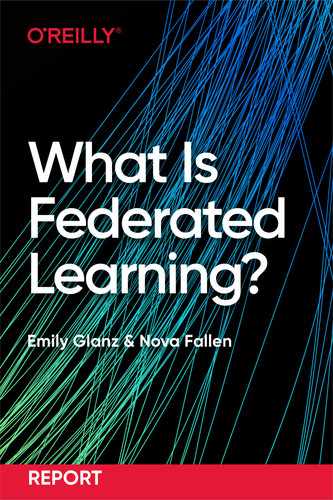Until recently, an organization would have had to collect and store data in a central location to train a model with machine learning. Now, federated learning offers an alternative. With this report, you'll learn how to train ML models without sharing sensitive data in the process. Google software engineers Emily Glanz and Nova Fallen introduce the motivation and technologies behind federated learning, providing the context you need to integrate it into your use cases. Whether you're a CTO, a software engineer, or a program or product manager, this report will help you understand how federated learning extends the power of AI to areas where data privacy is crucial. With federated learning, you can train an algorithm across multiple decentralized edge devices or servers that hold local data samples. You'll bring model training to the location where data was generated and lives. After reading this report, you will:
